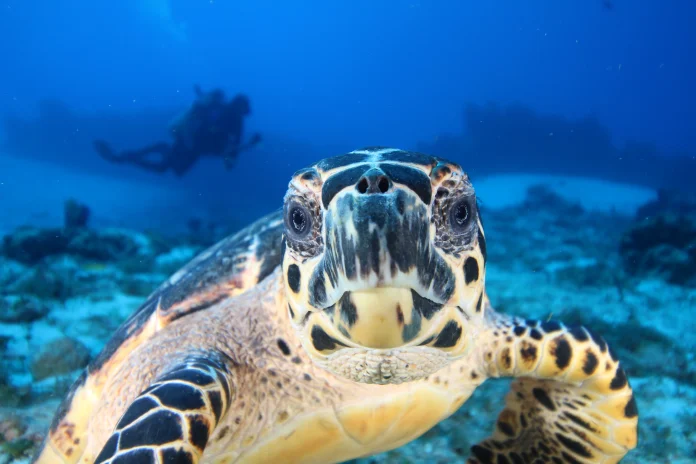This quarter’s column was inspired by an underwater photography blog (“How Good Are the Strobes for Light Intensity and Coverage?”1), generated by Reef Photo & Video in Florida. My first thought when reading was that it could double as a UV curing blog. For 47 years, my definition of a “deep dive” has been a dive deeper than 60 feet (18 meters). Let’s see if I can do a “2022 deep dive” without running out of air or bottom time… I mean, column space. Decide if the italicized statements from the photography blog also apply to UV curing.
UV Sources
Manufacturers love throwing out all these impressive numbers that sound essential to choosing a strobe that will do exactly what you want. And to whatever extent there is fudging taking place, the consumer can rest assured it will usually be to make things sound more impressive.
The best UV (broadband or LED) source is one that is matched to your process, formulation, needs and budget. Evaluate and run your formulation under the source, replicating (as best you can) production conditions. There always will be tradeoffs when deciding among different systems. Decide how much value to place on the supplier providing installation, timely service, troubleshooting, support and custom engineering, if required. Watch out for claims that sound too good to be true. Verify what is meant by lifetime hours, source stability, spectral stability and heat output. The amount and complexity of source maintenance will vary, but all sources – including LEDs – require some level of basic maintenance.
Watts refers to the power available, but not necessarily to the light output.
This statement also is true with UV sources. Do not confuse the applied electrical power (i.e., total Watts, Watts/inch or Watts/centimeter) with the UV power (W/cm2) reaching the cure surface. There are wide variations in UV systems with the same “rated” electrical power consumption or, in the case of LEDs, stated power output.
Guide Numbers are supposed to represent how much light a strobe puts out at a set distance at full power. There is not a standard distance. The strobe that was the most powerful and had the best coverage had the lowest Guide Number of the tested strobes.
Test and determine what UV source/type works for your process. UV curing is a combination of the right irradiance (W/cm2), energy density (J/cm2) and spectral output matched to your formulation. Verify any claims and understand how the values were measured.
Both strobes had the same Watt values, there are just a number of design years between them.
Are you trying to maintain a broadband system that has had more birthdays than you? Broadband sources have been used for years, and some of the systems still in use qualify as antiques. Forcing an old system to work on an application that would benefit from newer technology? Today’s generation of broadband systems have incorporated improvements to the power supply, controls, communication, transport/conveyor mechanisms and required maintenance. LEDs also have seen tremendous improvements in just a few short years.
The blog discusses the “color temperature of strobes,” which is measured in degrees Kelvin (°K). “Warmer” strobes allow more of the reds and oranges naturally filtered by the water and the dive depth to show in the image. In the UV industry, we can see differences in the “color” or “spectral output” of UV sources. For broadband sources, differences in the bulb manufacturing process, elements/element ratio, fill pressure and quartz purity can change the spectral output, especially in additive bulbs. The spectral output can change over time, especially in additive bulbs. The spectral output of a mercury-gallium arc bulb can shift and look more like the output from a mercury bulb if used beyond a certain point. Anything between the UV source and cure surface has the potential to alter the spectral output reaching your formulation. Equipment examples include dirty bulbs, aged/dirty reflectors and/or quartz plates. Curing an adhesive through plastic? Select a material that is compatible with your process. A change in a process at a supplier, such as a new mold release agent, also could block UV. The “color” of the UV source could possibly change if your purchasing group elects to source your bulbs from a different supplier. For an LED, spectral differences between units can be caused based on how individual diodes were selected (binned) and incorporated into the LED.
Measurement
Unfortunately, there is no official standard way of measuring much of this and it is almost guaranteed that no two manufacturers are doing things the same way. Clearly this manufacturer does not test the way other manufacturers test.
The above statement is about strobes. Radiometer manufacturers determine the spectral response of their own bands. The width, shape and what optic components are included in the published response vary among manufacturers. Other factors – such as the calibration source, dynamic range, sample rate, settings, instrument care and how the data were collected – also can impact the reported radiometer values. Communicate the radiometric values clearly, and be sure to identify the bands measured, as well as the instrument settings.
Reliability
Any given photographer could have had a terrible experience with one brand and perfect experience with another brand, while others experience the exact opposite. Smaller manufacturers have fewer strobes in the field. Larger manufacturers have more strobes in the field. Conclusions are best left to each individual based on their needs.
In the 42 years I have owned underwater photography equipment, I have cycled through different manufacturers with a wide spectrum of good and bad results. I have used 14 underwater housings/cameras and 10 strobes. Some systems flooded, not because of design error but because of operator error (me), while others were retired when technology changed. I now have standardized and simplified my equipment. This makes it easier to use, especially if it has been a few months since I was last in the water. When traveling, I bring back-up equipment, including an extra camera body, strobe, cables, spare parts, O-rings and tools.
I believe the same is true when it comes to UV curing, whether it be sources, formulations or measurement equipment. Decide on the equipment and suppliers with whom you want to partner. To the extent possible, standardize equipment, formulations, process control and maintenance procedures across production lines and facilities. Establish a back-up plan and stock consumable parts and spares. Also evaluate if you, your staff or a lack of training are the reasons for reliability issues in your process.
In terms of technology, changing from a film camera with 36 exposures per dive to a digital platform with thousands of potential exposures per dive was huge. The physical size of the equipment keeps getting smaller, with great underwater images now captured via cell phone cameras in housings. Evaluate if it is time to change your UV curing equipment to newer technology. Be sure to qualify the equipment and understand the support you will need and get. Have a process control and backup plan in place.
Summary
Do your research and test different equipment. Several points mentioned in the blog also apply to our world of UV curing:
- How small some of the differences are in leading strobes and how misleading some of the specifications can be. Select equipment and suppliers whose products work for your applications.
- The lighting performance is not radically different, but this is only one criterion. Take the whole picture into account. Are you getting good cure?
- Safe to say, when it comes to intensity and coverage, any of the strobes can get the job done and make nice images. We can talk lighting as it applies to your rig. There are a lot of great UV suppliers available. Find out what works for your process and document it. u
Parting Thought Flashback: Twenty-plus years ago, EIT used a tongue-in-cheek “UV Prayer” ad that started: “Dear UV angel in the sky, please let my coatings dry.” The idea came from the predive mantra muttered by underwater photographers before each dive: “Dear O-ring angel in the sky, please keep the inside of my camera dry.”
Reference
 Jim Raymont
Jim Raymont
Director of Sales, EIT LLC
jraymont@eit.com







